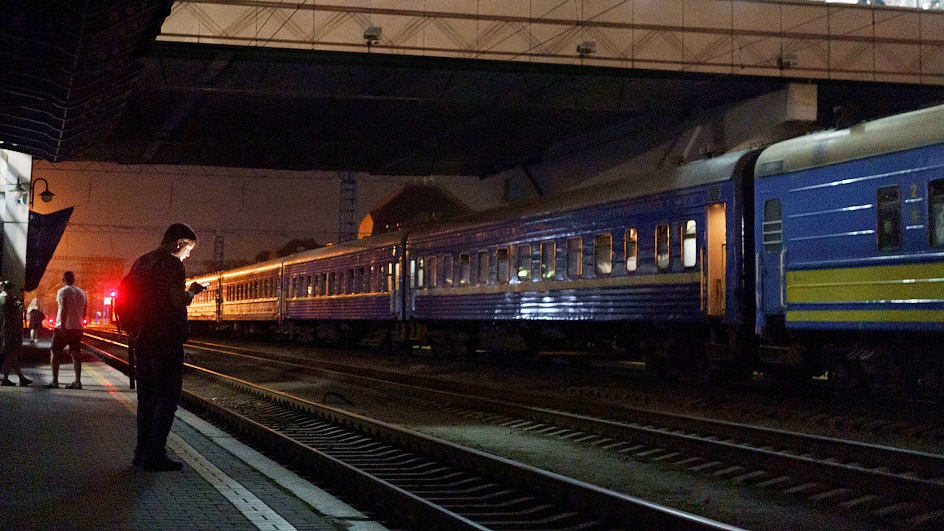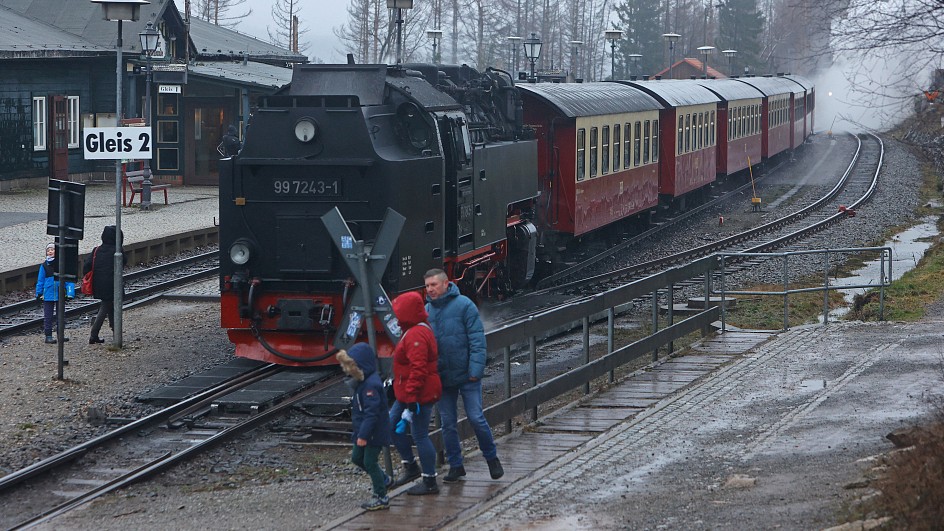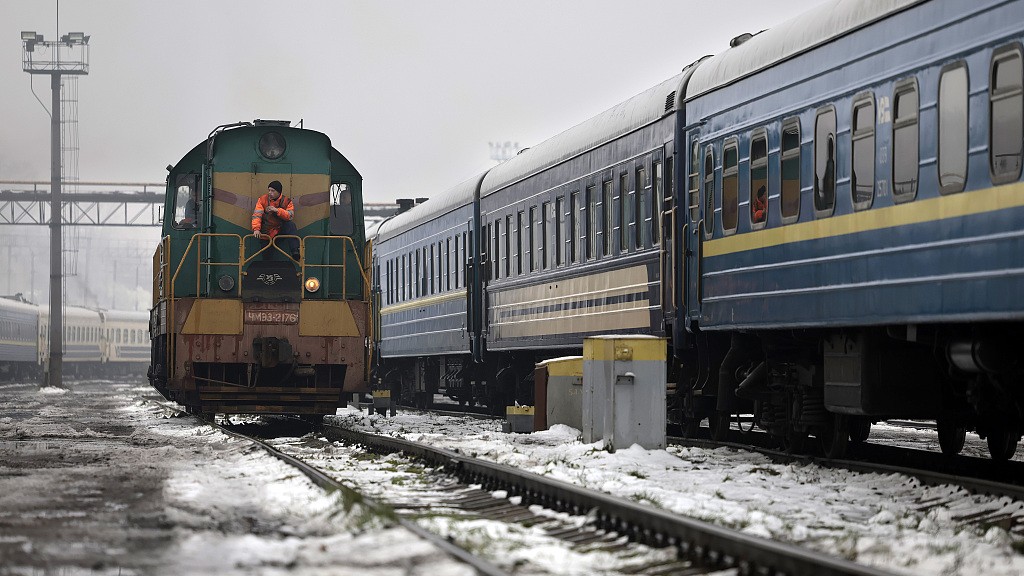
Ukraine's trains have helped with evacuation from the conflict over the last year. /David Goldman/CFP
Ukraine's trains have helped with evacuation from the conflict over the last year. /David Goldman/CFP
A high-speed rail network connecting Europe's big cities will help the battle against the climate crisis, reduce the obsession with cars, improve energy sustainabability and inspire travelers on all budgets.
This is according to a survey assessing the market potential and impact of investments in high-speed trains, analyzing different network scenarios with a focus on socio-economic and environmental benefits over the next 30 years.
The report, commissioned by Europe's Rail Joint Undertaking (EU-RAIL), proposes a 'masterplan' to help Europe become interconnected. It states that high-speed rail is currently "scattered" across western Europe and "largely inexistent" in central eastern Europe, with almost no high-speed infrastructure in the member EU states that recently joined.
It calls on the European Commission (EC) and member nations to adopt plans costing $600 billion over the next three decades to build a comprehensive network that triples the existing high-speed rail network and create net positive benefits to society in the range of $820 billion by 2070.
A top benefit of high-speed trains is the low carbon footprint thanks to their high energy efficiency, and the ability to power transport with increasingly sustainable electricity, says the report. It states these trains are far less emission-intensive than aviation or passenger road transport.
Achieving the EU's ambitious climate target would also be helped, the report adds. The EU has pledged to ensure no net emissions of greenhouse gases in the bloc by 2050.
The study also says these rail networks have the "potential to stimulate regional economic development by connecting citizens and regional businesses through a fast and competitive alternative to aviation and passenger cars."
Carlo Borghini, Executive Director at EU-RAIL, said the project fitted in with Europe's sustainable strategy. He said: "While other transport modes will spend the next two decades to decarbonize, rail will continue building and fostering the future growth and integration of Europe."
The main conclusion from the findings indicates that an accelerated investment in a complete European high-speed rail network would "elicit a considerable response from travelers," resulting in economies of scale for both train traffic and other associated economic and environmental benefits.

It is hoped the high-speed network will stretch across Europe, including Germany. /CFP
It is hoped the high-speed network will stretch across Europe, including Germany. /CFP
ALLRAIL was one of the organizations that collaborated on the report. Secretary General Nick Brooks said he wanted the high-speed network to "displace the private individual motor car as a product for the masses," be attractive to "everyone from the budget conscious to very affluent" and should form "the backbone of speedy door-to-door travel across the EU."
Brooks added: "We are certain the findings of this study will help guide national and European stakeholders towards reaching these goals."
The push for an integrated rail strategy across Europe is clearly in overdrive.
When this study was published, Ukrainian Railways signed a cooperation agreement with the Polish Centralny Port Komunikacyjny (CPK). The deal has the intention of developing a high-speed train line in European standard gauge (1,435 millimeters) between Warsaw and Kyiv, via Lviv.
Ukraine's railway network is in 1,520 mm gauge, prevalent in all post-Soviet countries. Standardizing these gauges would boost capabilities for travel westward from Ukraine. CPK has also recently signed cooperation agreements across the continent.

The proposal will see Ukraine's rail gauge standardized. /Jeff J Mitchell/Getty/CFP
The proposal will see Ukraine's rail gauge standardized. /Jeff J Mitchell/Getty/CFP
The proposed integrated network spans Estonia, Latvia, Lithuania, Poland, Czechia, Slovakia, Hungary and Austria – with onward connectivity towards Romania, Ukraine and countries outside the Three Seas area such as Germany.
Preparatory construction work on the CPK project in Poland is planned to start in 2023, with the first sections, including the Warsaw to Lodz route, launching in 2028.
Volodymyr Shemaev, Director of the Ukraine project, said: "It will be an important step towards Ukraine's integration with the EU."
The total estimated costs of these specific projects amount to $67 billion. This includes $52 billion for the capital expenditure to design and build the new high-speed rail infrastructure and $15 billion for the ongoing operation and maintenance costs.
The benefits calculated would be around $130 billion, of which the majority of $60 billion corresponds to passenger travel time savings.
Mikołaj Wild, CEO of CPK, saidd: "This is a unique, one-of-a-kind time in our common history when, functioning together in the region, we can create an unrivaled rail transportation offering.
"Our projects can bring about an economic domino effect, giving a boost to other industries and sectors."